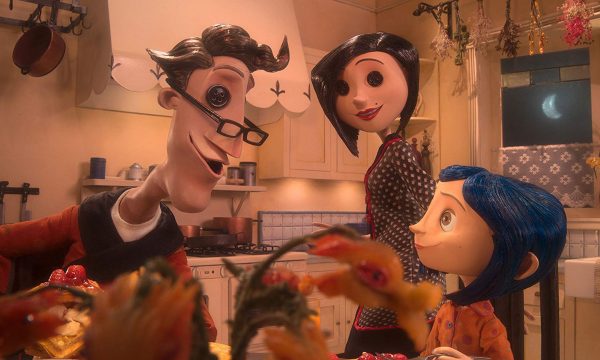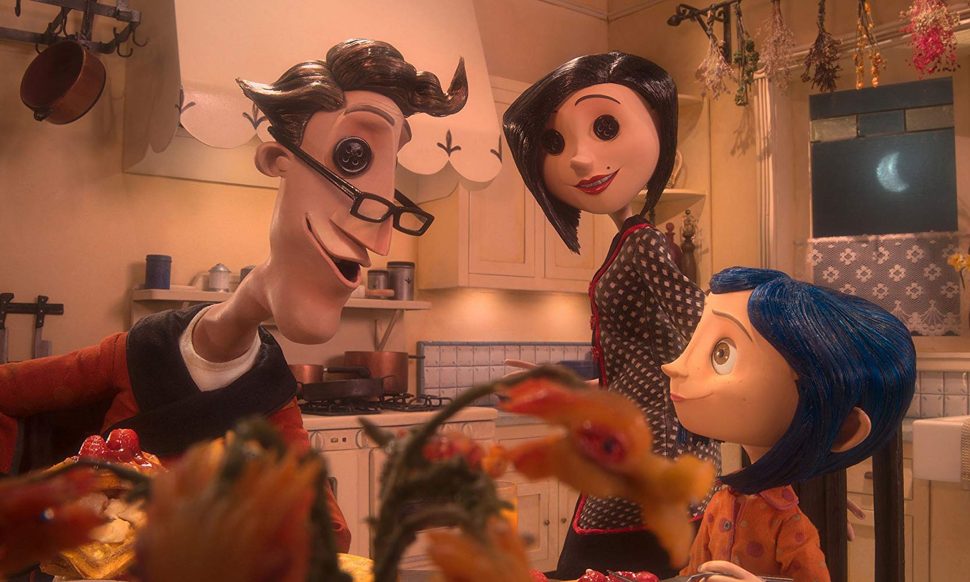![]() Ten years ago, Henry Selick’s “Coraline” premiered as the first feature from animated movie studio Laika. Since then, the studio has had critical acclaim for its subsequent films, but “Coraline” continues to feel like something of unique value. And, it is. The best thing about it is that it feels every bit as compelling, sharp, innovative and unnerving when I watched it in 2019 as it did in 2009.
Ten years ago, Henry Selick’s “Coraline” premiered as the first feature from animated movie studio Laika. Since then, the studio has had critical acclaim for its subsequent films, but “Coraline” continues to feel like something of unique value. And, it is. The best thing about it is that it feels every bit as compelling, sharp, innovative and unnerving when I watched it in 2019 as it did in 2009.
Animation has seen a number of changes in the last decade, and much of it has been marked by Pixar’s rise to dominance as the most critically acclaimed studio in the genre. A year after its premiere, “Coraline” would lose out to Pixar’s “Up” at the 82nd Academy Awards amidst a slate of excellent nominees. The other nominees were the Belgian/Irish fantasy “The Secret Life of Kells,” Disney’s brief return to handrawn animation with “The Princess and the Frog,” and Wes Anderson’s sly and sharp “Fantastic Mr Fox.” And, yet, the awards loss seems negligible when rewatching “Coraline,” which seems to not have aged at all, an issue that befalls too many animated films of this decade which depend on an omnipresent awareness of pop culture references and allusions. Pixar’s family friendly animated slate has never attempted something with the specific chilly effect that “Coraline” depends on. Even Laika studio has not attempted a “Coraline” rehash. Instead, “Coraline” is rooted in its place as a dark tale that could happen anywhere, and at any time.

“Coraline” is a 3D stop-motion adaptation of the Neil Gaiman book of the same name. It’s a chilling/magical story about a young girl who finds a door in her new house that leads to an alternate world. At first, things are very much better before they come to seem very much worst. The central idea is familiar: someone who feels neglected in the real world yearns for a better life only to realise that the seductive pull of the magical world they find belies the creepy horrors that keep it running. And it’s that horror element that’s so critical in defining “Coraline” among the many films, animated and live-action, that play around with fantasy. “Coraline” pitches the increasingly creepy dynamic that defines its fantasy world at a level that does not condescend to its children audience, nor seem too diluted for its adult audience. It’s that sharp duality that feels so essential to “Coraline” as animated films still face the pressure of legitimising themselves as more than just negligible entries in the film world. What’s so interesting about “Coraline” is that it argues for that respect while all the while being a movie about children but not only for children.
At the end of 2009, “Coraline” would be eclipsed by another key moment in 3D film when James Cameron’s “Avatar”y would premiere. Despite the billions it generated at the box-office, Cameron’s work has descended into an awkward punchline even though it and Coraline – for different reasons – emerged as essential parts in the rise of 3D. Both films are still, easily, two of the most dependent on 3D. They both reveal how 3D works so well when zeroing on production design as evidenced by world-building. Selick’s adaptation (he directs and writes the film) improves, in some ways, on Gaiman’s story. In the original story, Coraline realises early on that something is amiss but in the film her realisation is postponed. The number three becomes a key to her adventures as her journeys to the other world become more enchanting with each visit. The real world is marked by a straightforward dullness, the fantasy world by a dizzying and disorienting smorgasbord of colour.
There have been excellent films pitched for children in the last ten years. “Coco” was moving and earnest, “Moana” is a call to arms for young girls and Pixar’s “Inside Out” turns philosophical concepts to children in keen ways. The closest amalgamation of horror and animation happened three years later when Tim Burton (who worked with Selick on “The Nightmare before Christmas”) directed the sly fantasy “Frankenweenie”, but Burton’s interest in horror via animation is more self-referentially comedic than earnestly serious. Even when “Coraline” amuses, it is clear-eyed and aware of its depth both in story and form that distinguishes it. Coraline, our heroine, is a regular young girl. She is not cutesy or ideal or even idealistic and oftentimes is mean-spirited, grumpy and trying. Her parents mean well, but constantly ignore her. The film’s ethos is not to reach a perfect world but to instil Coraline with the realisation of her own limitations. It’s chilly stuff for children and yet feels essential, especially for its unusualness and for its message, which is distinct but not moralistic. More of thoughtful fable than a fanciful fairy story.
There’s a scene towards the climax when a spider-like figure begins to combust, giving way to one of the most terrifying shots I’ve seen in an animated film. The shot is terrifying both for its animated skill but for the chilling way the combustion signals a jarring uneasiness in the story it tells. That is the secret of this movie. From the inventive score of Bruno Coulais (punctuated by a children’s choir singing nonsense phrases) to the committed cast of performers (Teri Hatcher, as both Coraline’s Mother and her Other Mother, has never been better), “Coraline” leans into the fantasy but not into the easily digestible. This is complex and thoughtful filmmaking made all the better but its glorious animation. We’ve been lucky to enjoy to some great animation in the last decade, but “Coraline” is my easy pick for the best.

